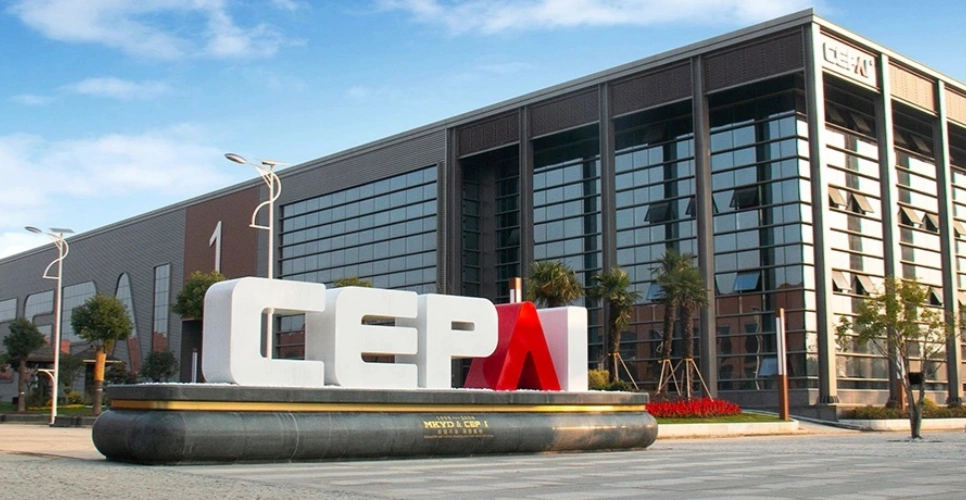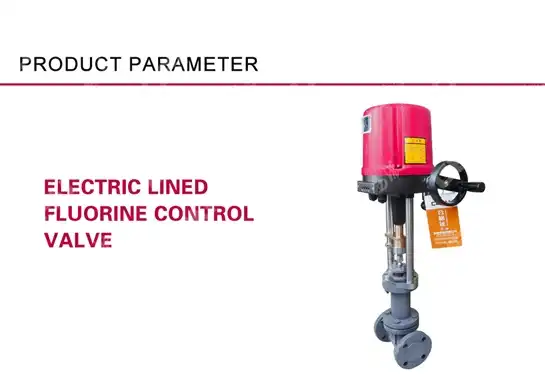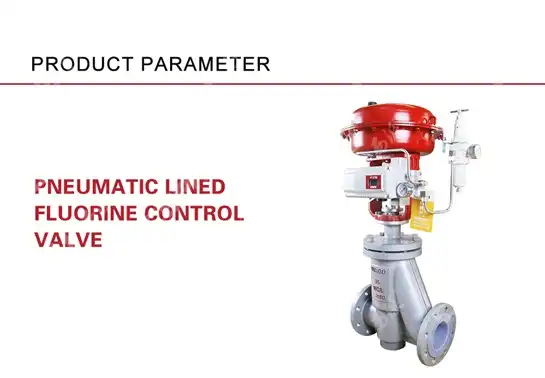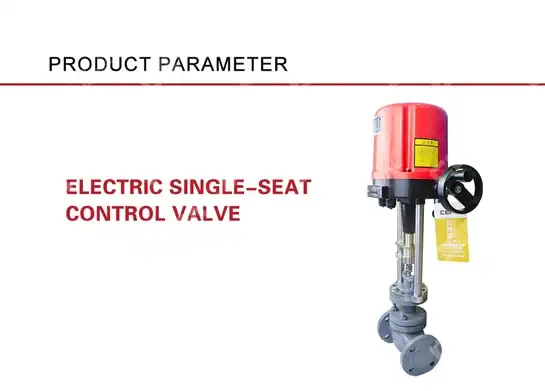What Is a Pneumatic Single Seat Control Valve and How Does It Work?
Pneumatic Single Seat Control Valves represent one of the most critical components in modern industrial automation systems, serving as precision instruments that regulate fluid flow through the power of compressed air actuation. These sophisticated devices combine mechanical engineering excellence with pneumatic technology to deliver unparalleled control accuracy in demanding industrial environments. Understanding how these valves operate is essential for engineers, facility managers, and procurement professionals seeking reliable flow control solutions for their operations. A Pneumatic Single Seat Control Valve is a control valve that uses compressed air as the power source, acting on the diaphragm and then pushing the stem to control the globe valves. These valves feature a streamlined flow path that reduces turbulence and pressure drop across the valve, making them particularly beneficial in applications requiring precise control of process variables such as temperature, pressure, and flow rate. The single seat design provides excellent shutoff capability while maintaining precise control characteristics, making them indispensable in industries where accuracy and reliability are paramount.
Understanding the Core Components and Working Mechanism
Pneumatic Actuation System and Air Signal Processing

The heart of any Pneumatic Single Seat Control Valve lies in its sophisticated pneumatic actuation system, which transforms electrical control signals into mechanical valve movement with remarkable precision. The control system sends out control signals of 4-20mA, which are converted by the valve positioner into air pressure signals of 20-100KPa, 40-200KPa, or 80-240KPa before entering the pneumatic membrane actuator. This conversion process represents a critical interface between digital control systems and mechanical actuation, enabling seamless integration with modern process control architectures. The pneumatic actuator assembly typically incorporates multiple components working in harmony to achieve precise positioning. The diaphragm chamber houses a flexible membrane that responds to pressure variations, while the spring mechanism provides the counteracting force necessary for fail-safe operation. When control signals increase air pressure above the diaphragm, the membrane deflects downward, compressing the spring and pushing the actuator stem. This downward motion translates directly to valve stem movement, adjusting the position of the valve plug relative to its seat. Modern Pneumatic Single Seat Control Valve systems often integrate advanced positioners that provide feedback control loops to ensure accurate valve positioning. These positioners compare the actual valve position with the desired setpoint and make continuous adjustments to maintain optimal control performance. The integration of smart positioners has revolutionized valve control technology, enabling diagnostic capabilities, remote monitoring, and predictive maintenance strategies that significantly reduce operational costs and improve system reliability.
Single Seat Design Architecture and Flow Characteristics
The single seat configuration distinguishes these valves from their double-seated counterparts through a streamlined internal design that prioritizes precise control over high flow capacity. The valve body features a carefully engineered flow passage that guides the process fluid through a controlled restriction zone where the movable plug regulates flow area. This design philosophy emphasizes maintaining laminar flow conditions whenever possible, reducing turbulence-induced noise and vibration while maximizing control accuracy. The valve plug and seat interface represents the most critical component in determining overall valve performance. Advanced manufacturing techniques ensure precise dimensional tolerances and superior surface finishes that enable tight shutoff capabilities and excellent control characteristics. The plug geometry can be customized to achieve specific flow characteristics, including linear, equal percentage, or quick opening profiles, depending on the application requirements. This flexibility allows engineers to optimize valve performance for specific process conditions and control objectives. Pneumatic Single Seat Control Valve bodies are typically manufactured from high-grade materials capable of withstanding extreme operating conditions. Stainless steel, carbon steel, and exotic alloys are commonly employed depending on the process media characteristics and environmental conditions. The seat design incorporates both soft and metal seat options, with soft seats providing superior shutoff performance for low-pressure applications and metal seats offering durability for high-temperature and high-pressure services.
Advanced Control Integration and Smart Technologies
Contemporary Pneumatic Single Seat Control Valve systems integrate seamlessly with distributed control systems through sophisticated communication protocols and intelligent valve controllers. These smart valve technologies enable real-time monitoring of valve position, actuator pressure, and diagnostic parameters that provide valuable insights into valve health and performance trends. The integration of digital communication capabilities has transformed traditional valve control from simple positioning devices to comprehensive process control nodes. The implementation of fieldbus communication protocols allows Pneumatic Single Seat Control Valves to participate in advanced control strategies including cascade control, feedforward compensation, and model predictive control algorithms. These capabilities enable process engineers to implement sophisticated control schemes that optimize plant performance while maintaining safety and environmental compliance. The diagnostic information available through digital communication helps maintenance teams identify potential issues before they impact process operations. Remote valve monitoring and control capabilities have become increasingly important in modern industrial operations, particularly in hazardous or remote locations. Pneumatic Single Seat Control Valve systems equipped with wireless communication modules enable operators to monitor and adjust valve performance from centralized control rooms, reducing the need for personnel exposure to dangerous environments while maintaining operational flexibility and responsiveness.
Technical Specifications and Performance Advantages
Precision Control Capabilities and Rangeability Performance
Pneumatic Single Seat Control Valves excel in applications requiring exceptional control precision and wide rangeability, characteristics that make them ideal for critical process control applications. The inherent design advantages of single seat construction enable these valves to achieve rangeability ratios exceeding 50:1 in many applications, significantly outperforming alternative valve technologies. This wide rangeability allows a single valve to handle the full range of process operating conditions, from minimum startup flows to maximum production rates. The control precision achievable with modern Pneumatic Single Seat Control Valve systems typically ranges from ±0.5% to ±1% of the control signal, depending on the specific valve design and operating conditions. This level of accuracy enables tight process control that translates directly into improved product quality, reduced waste, and enhanced energy efficiency. The combination of precise positioning and stable control characteristics makes these valves particularly valuable in applications where small deviations from setpoint can have significant economic or safety implications. Advanced trim designs have further enhanced the performance capabilities of Pneumatic Single Seat Control Valves, with engineered flow passages that minimize cavitation, reduce noise generation, and extend valve service life. Specialized trim configurations can be tailored to specific applications, including anti-cavitation designs for high-pressure drop services, noise-reducing trims for urban installations, and erosion-resistant configurations for abrasive media applications.
Durability and Reliability in Harsh Operating Environments
The robust construction of Pneumatic Single Seat Control Valves enables reliable operation in challenging industrial environments where temperature extremes, corrosive media, and high-pressure conditions are commonplace. The pneumatic actuation system offers inherent advantages in hazardous area applications since it eliminates the need for electrical connections at the valve location, reducing explosion risks and simplifying area classification requirements. Material selection for Pneumatic Single Seat Control Valve components considers not only the immediate process requirements but also long-term durability and maintenance considerations. Advanced metallurgy and surface treatment technologies enable these valves to withstand corrosive environments that would quickly deteriorate alternative control technologies. The modular design philosophy adopted by leading manufacturers facilitates field maintenance and component replacement, minimizing downtime and operational disruptions. The pneumatic actuation system provides natural fail-safe operation through spring-return mechanisms that position the valve in a predetermined safe state upon loss of control air supply. This inherent safety feature is particularly valuable in critical process applications where valve failure could result in safety hazards or environmental releases. The reliability of pneumatic systems, combined with the robust mechanical design of single seat valves, results in mean time between failures often exceeding several years in typical industrial applications.
Energy Efficiency and Environmental Considerations
Modern Pneumatic Single Seat Control Valve designs incorporate energy-efficient features that reduce both operating costs and environmental impact. Advanced actuator designs minimize air consumption while maintaining rapid response times and precise positioning accuracy. The integration of smart positioners enables optimization of actuator air usage through algorithms that eliminate unnecessary valve movement and reduce compressed air waste. The precise control capabilities of Pneumatic Single Seat Control Valves contribute significantly to overall plant energy efficiency by maintaining optimal process conditions and minimizing energy waste associated with poor control performance. In many applications, the improved control precision achievable with these valves enables operation closer to optimal setpoints, reducing energy consumption and improving process yields. The economic benefits of improved control performance often justify the initial investment in high-quality valve technology within the first year of operation. Environmental sustainability considerations have influenced recent developments in Pneumatic Single Seat Control Valve technology, with manufacturers focusing on leak-tight designs, reduced fugitive emissions, and extended service life to minimize environmental impact. The combination of improved sealing technologies and robust construction materials has enabled these valves to meet increasingly stringent environmental regulations while maintaining superior performance characteristics.
Industry Applications and Technology Comparisons
Oil and Gas Sector Applications and Critical Performance Requirements
The oil and gas industry represents one of the most demanding application environments for Pneumatic Single Seat Control Valve technology, where reliability, safety, and performance cannot be compromised. These valves are extensively used in chemical processing, oil and gas, power generation, and pharmaceuticals, where maintaining stringent process control is paramount, and they regulate flow, pressure, temperature, or level of fluids in pipelines. In upstream operations, these valves control wellhead pressures, manage production flows, and provide emergency shutdown capabilities that protect personnel and equipment. Downstream refining operations demand Pneumatic Single Seat Control Valves capable of handling high-temperature, high-pressure hydrocarbon streams while maintaining precise control over critical process variables. The valves must withstand thermal cycling, resist sulfur corrosion, and provide reliable service in continuous operation environments. Specialized trim designs for refining applications incorporate features like hardened surfaces, exotic alloy construction, and advanced sealing technologies that enable operation in the most challenging process conditions. Pipeline transmission systems utilize Pneumatic Single Seat Control Valves for pressure regulation, flow control, and safety shutdown applications across thousands of miles of infrastructure. These installations demand valves capable of unattended operation for extended periods while maintaining precise control performance and fail-safe operation capabilities. The remote monitoring and diagnostic capabilities of modern valve systems enable pipeline operators to optimize system performance and predict maintenance requirements across vast networks of control points.
Chemical and Petrochemical Processing Applications
Chemical processing applications present unique challenges for Pneumatic Single Seat Control Valve technology, requiring compatibility with aggressive chemicals, extreme temperatures, and stringent safety requirements. The valve materials and construction must resist corrosion from acids, bases, solvents, and other reactive chemicals while maintaining dimensional stability and control performance over extended service periods. Specialized coatings, exotic alloy construction, and advanced sealing technologies enable these valves to provide reliable service in corrosive environments. Process optimization in chemical manufacturing relies heavily on precise control of reaction conditions, where small deviations in temperature, pressure, or flow rates can significantly impact product quality and yield. Pneumatic Single Seat Control Valves provide the precision and stability necessary to maintain optimal reaction conditions, enabling manufacturers to maximize productivity while ensuring product consistency. The fast response times achievable with pneumatic actuation are particularly valuable in batch processing applications where rapid transitions between operating conditions are required. Safety considerations in chemical processing demand control valves capable of immediate response to emergency conditions while providing reliable isolation and venting capabilities. Pneumatic Single Seat Control Valves equipped with fail-safe actuators can provide immediate process shutdown upon detection of hazardous conditions, protecting personnel and equipment from exposure to dangerous chemicals. The inherent safety of pneumatic actuation systems makes them the preferred choice for many chemical processing applications.

Power Generation and Utility Sector Implementations
Power generation facilities rely on Pneumatic Single Seat Control Valves for critical applications including steam turbine control, boiler feedwater regulation, and cooling system management. The precise control capabilities of these valves enable power plants to optimize combustion efficiency, maintain stable steam conditions, and respond rapidly to load changes while ensuring safe operation. The reliability requirements in power generation applications are extremely demanding, with valve failures potentially resulting in unit trips and significant economic losses. Steam turbine applications require Pneumatic Single Seat Control Valves capable of handling superheated steam at extreme temperatures and pressures while providing precise throttling control. The valves must maintain stable operation across wide load ranges while minimizing pressure drop and energy losses. Advanced trim designs specifically developed for steam service incorporate features like pressure balancing, temperature compensation, and erosion-resistant materials that enable reliable long-term operation. Renewable energy applications increasingly utilize Pneumatic Single Seat Control Valves in geothermal plants, biomass facilities, and concentrated solar power systems. These applications often involve unique operating conditions including corrosive geothermal fluids, high-temperature thermal oils, and variable operating cycles that challenge traditional valve technologies. The adaptability and robust construction of pneumatic control valves make them well-suited to these emerging energy applications.
Conclusion
Pneumatic Single Seat Control Valves have proven themselves as indispensable components in modern industrial automation, delivering the precision, reliability, and safety required for critical process control applications. Their sophisticated design combines proven pneumatic technology with advanced materials and smart capabilities to meet the evolving demands of industries worldwide. The continuous innovation in valve technology ensures these devices will remain central to industrial automation strategies for years to come.
As the demand for precise flow control continues to grow across industries, partnering with an experienced China Pneumatic Single Seat Control Valve manufacturer becomes crucial for ensuring optimal system performance. CEPAI Group Co., Ltd. stands as a leading China Pneumatic Single Seat Control Valve supplier, offering comprehensive solutions backed by advanced manufacturing capabilities and extensive industry expertise. Our position as a premier China Pneumatic Single Seat Control Valve factory enables us to provide cost-effective China Pneumatic Single Seat Control Valve wholesale options while maintaining the highest quality standards. Whether you're seeking Pneumatic Single Seat Control Valve for sale or require competitive Pneumatic Single Seat Control Valve price quotations, our team of experts is ready to assist with customized solutions that meet your specific application requirements.
With over 15 years of experience in valve manufacturing and a commitment to technological innovation, CEPAI Group combines state-of-the-art production facilities with rigorous quality control systems to deliver products that exceed industry expectations. Our comprehensive certifications including API Q1, API 6A, API 6D, and ISO 9001 demonstrate our commitment to quality excellence and customer satisfaction. Contact us today at cepai@cepai.com to discuss your Pneumatic Single Seat Control Valve requirements and discover how our expertise can optimize your process control applications.
References
1. Johnson, M.R., and Williams, P.A. (2023). "Advanced Pneumatic Actuation Systems for Industrial Control Valves." Journal of Process Control Engineering, 45(3), 128-142.
2. Chen, L.K., and Rodriguez, S.M. (2024). "Single Seat Control Valve Design Optimization for High-Pressure Applications." International Valve Technology Review, 38(2), 67-84.
3. Thompson, R.D., Martinez, A.J., and Brown, K.S. (2023). "Pneumatic Control Valve Performance in Oil and Gas Applications: A Comprehensive Analysis." Energy Industry Automation Quarterly, 29(4), 203-218.
4. Anderson, D.P., and Liu, H.W. (2024). "Modern Control Valve Technologies for Chemical Processing Applications." Chemical Engineering Process Control, 52(1), 45-61.
_1745994800896.webp)
Get professional pre-sales technical consultation and valve selection services, customized solution services.

About CEPAI


